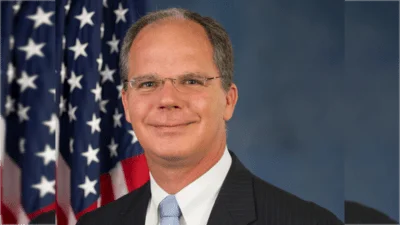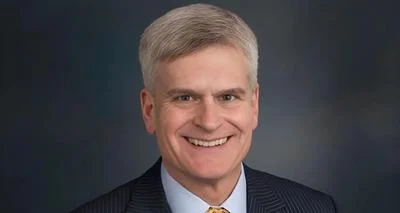Dear Secretary Azar:
We write to urge your focus on preventing suicides following public health emergencies or disasters. The Preparedness and All-Hazards Prevention and Advancing Innovation Act of 2019 (PAHPAI, Public Law 116-22) recognizes the important role government can perform in helping families recover and deal with the anguish and aftermath of a public health emergency or disaster, and includes several provisions designed to promote and enhance mental health among individuals impacted by these events. Incorporating mental health support and suicide prevention efforts into public health emergency preparedness and response efforts can have a positive impact on both short- and longer-term suicide rates. Accordingly, we urge that the Department of Health and Human Services expeditiously implement the relevant sections of PAHPAI and prioritize suicide prevention efforts as part of the Department’s work related to public health emergency preparedness and response.
Suicide trends in the United States are alarming, and the tragedy of suicide has deep and long-lasting impacts on families, workplaces, and communities. Suicide was the tenth leading cause of death for all ages in 2017, responsible for 47,173 deaths.[1] Suicide rates vary significantly by age; suicide is the second-leading cause of death in Americans aged 10-34, and the fourth leading cause among people aged 35 to 54.[2] In 2018, the Centers for Disease Control and Prevention (CDC) reported that suicide had risen nearly 30 percent from 1999 to 2016 and has increased in 49 of the 50 states.[3]
Public health emergencies create loss of life and property, financial and physical uncertainty, and psychological distress. Public health emergencies and disasters are correlated with post-traumatic stress disorder (PTSD) and depression; data demonstrate that the prevalence of PTSD among direct victims of disasters ranges from 30 percent to 40 percent compared with a prevalence of five percent to 19 percent in the general population.[4] These symptoms and impacts are especially acute for people who have experienced a financial loss or have fewer social supports, which are also risk factors for individuals who die by suicide.[5]
Disasters and emergencies also correlate with higher suicide rates in the months and years following their initial impact. According to a study published in the New England Journal of Medicine, suicide rates increased in the four years after floods by 13.8 percent; in the two years after hurricanes by 31.0 percent; and in the first year after earthquakes by 62.9 percent.[6]
More specifically:
- In Puerto Rico, there was an average of 19 suicides per month in the 8 months before Hurricane Maria in 2017, and 25 suicides per month in the immediate 3 months post Hurricane Maria.[7]
- In New Orleans, there were significant increases in the prevalence of suicidal ideation and suicide plans 6 months post-hurricane Katrina compared with 2 years later.[8] Researchers concluded that psychosocial stressors associated with the natural disaster continue or intensify as time progresses.
- Following a significant flash flood in southern Alberta in 2013, the most costly natural disaster in Canada to date, nearly one out of three flood-related calls to the Distress Centre Calgary were of a suicidal nature.[9]
PAHPAI requires that applicants for the CDC’s Public Health Emergency Preparedness (PHEP) cooperative agreement include in their All-Hazards Public Health Emergency Preparedness and Response Plan a description of how they intend to “integrate information to account for individuals with behavioral health needs following a public health emergency."[10] Research shows that training providers to recognize and treat depression and other risk factors can help reduce suicide rates.[11] In acute crises, where feelings of hopelessness and loss can feel overwhelming, behavioral health services are necessary and can save lives.
PAHPAI also reauthorizes the National Advisory Committee on Children and Disasters (NACCD), requiring the Advisory Committee’s membership include behavioral health professionals and that the Substance Abuse and Mental Health Services Administration (SAMHSA) be included among federal representatives. These requirements will ensure behavioral health experts are involved in creating and implementing best practices and plans that assist in stabilizing people with mental health needs following disasters and other public health emergencies. With the concerning trends in youth suicide rates, it is important that the NACCD include youth-focused behavioral health strategies to ensure that all people who have lived through disasters and public health emergencies have age- and culturally-appropriate behavioral health services.
We request a response no later than Nov. 19, 2019, describing the efforts you are undertaking or planning related to preventing suicides following disasters and other public health emergencies, including in your implementation of the Preparedness and All-Hazards Prevention and Advancing Innovation Act of 2019. If you have any questions regarding this letter, please contact Andi Fristedt with the HELP Committee Staff at (202) 224-7675.
Sincerely,
Patty Murray
Ranking Member
United States Senator
Robert P. Casey, Jr.
United States Senator
Margaret Wood Hassan
United States Senator
cc: Dr. Robert Kadlec
Assistant Secretary for Preparedness and Response
Department of Health and Human Services
Dr. Robert Redfield
Director of Centers for Disease Control
Department of Health and Human Services
Dr. Elinore McCance-Katz
Assistant Secretary for Mental Health and Substance Abuse
Department of Health and Human Services








